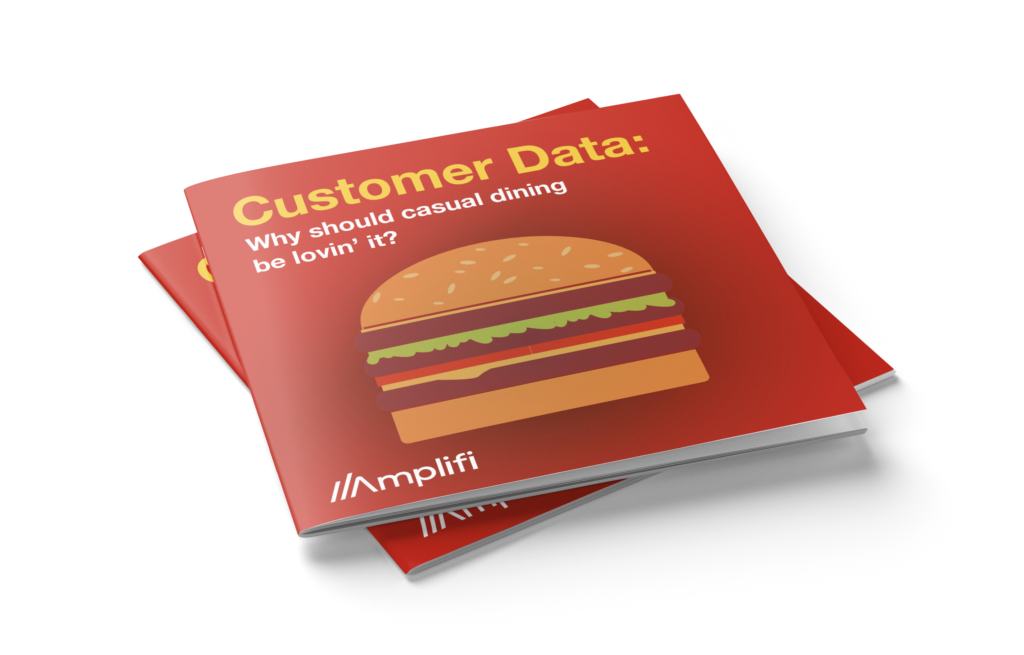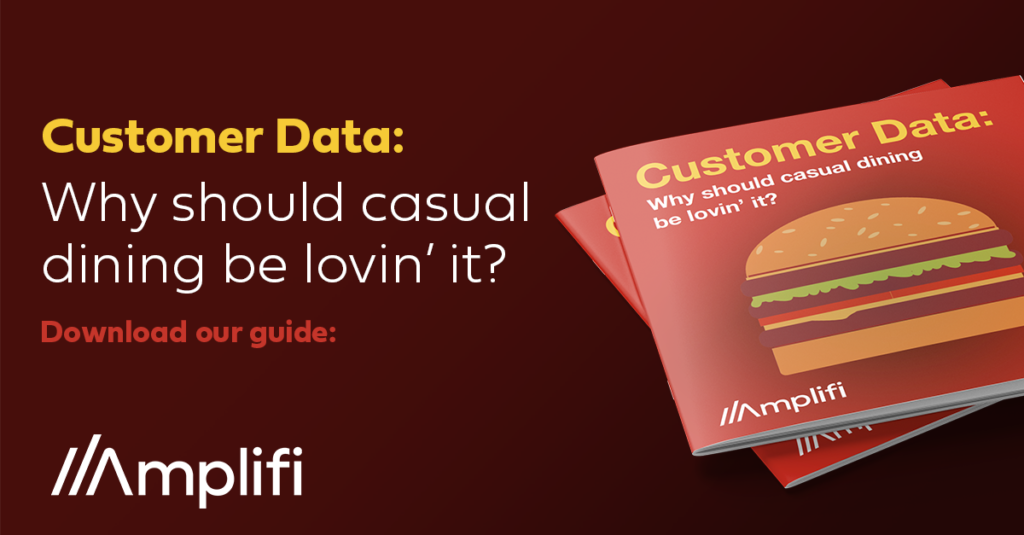Customer Data can be the difference between a Quick Service Restaurant (QSR) consistently captivating its audience or failing to retain any kind of customer loyalty whatsoever.
To truly achieve the benefits of customer data, QSRs need two things. Firstly, better data. Secondly, a platform that helps them orchestrate massive amounts of customer data and capitalize on it to drive revenue.
Companies such as McDonald’s and Starbucks are already seeing the benefits of a data-led approach, unveiling loyalty schemes that allow them to consistently and effectively engage customers across multiple channels based on data like customer food choices and habits.
Providing engaging, personalized content like bespoke deals makes customers feel recognized and valued, increasing their chances of returning to the restaurants. Customers are rewarded for their loyalty, and the QSR is given access to information that helps them to achieve better insight and better marketing.
It’s a win-win situation. But first things first…
What is customer data?
Lots of information is out there about what value customer data can offer.
Customer data management enables companies to unify customer data from all kinds of sources – point-of-sale systems, social media profiles, website behavior, surveys, third parties, and so on – and resolve any identity conflicts to create a real-time, single view of each customer.
That single view can then be used to drive real value by helping them segment their customer data to deliver personalized and tailored communications to their customers.
What does ‘better data’ look like?
Every yin needs a yang.
To understand the benefit of better data, QSRs need to understand what poor-quality data looks like and how it can be damaging.
Poor-quality data is taken from lots of different sources and deposited in siloes that aren’t integrated, removing the value of that data. It also refers to data that’s inaccurate, out-of-date, or isn’t really relevant. You can’t use it to create a complete picture of your customers, which is the entire point of collecting customer data in the first place. And you can’t track the level of consent customers have given, which is a disaster waiting to happen.
High-quality customer data and the single view of a customer created by customer data management can help QSRs improve customer experiences at each touchpoint of their journey.
Let’s examine how.
Whose customer are they?
Ordering food through the likes of UberEats, Just Eat and Deliveroo is easy. Online food delivery companies give customers access to a wide range of cuisines that are local to them and can deliver fast. Why go through the rigmarole of visiting a specific restaurant’s website, or downloading their app, when you can have it all in one place?
Third-party delivery companies are excellent for making ordering quick and convenient, for both the customer and, in many cases, the QSR. Yet it means that a valuable asset – your customer data – is held by their platform, not you. As a result, online food delivery companies can end up knowing more about your customers than you do. So how do you solve the problem, and ensure you’re getting the same – if not better – customer insight as they are?
As we cover in our comprehensive guide for QSRs, businesses such as Burger King and McDonald’s have seen a sizeable increase in sales after implementing their own apps that make loyalty and customer engagement their core purpose.
The Burger King app, for instance, rewards customers with coupons and deals tailor-made to their preferences. The app can link to both online and in-store purchases, via mobile wallet functions, and accumulates ‘BK crowns’ every time a customer buys. It’s a loyalty app that makes it worthwhile for customers to download, share their information, and use it every time they place an order (wherever that order might take place).
In return, it gives Burger King the data they need to serve customers with tailored marketing, improve ROI on outreach, and integrate relevant, good-quality customer data into their wider data operations.
Case in point: you can use data from loyalty apps such as this in real-time, with activities like purchases automatically updating the customer’s data profile, making timely data-based decisions throughout the customer lifecycle more accurate.
Understand CLTV (customer lifetime value)
A customer comes to your QSR, buys their food, and walks out again. Is their relationship with your brand over? You should be saying “Of course not”.
The single view of a customer provided by customer data management helps you calculate your customer’s lifetime value – and helps you to understand what causes their spending to fluctuate. Why do they spend more on Fridays? Why do they spend less after the 12th? Why has spending on kid’s meals increased, and those late Saturday night orders declined?
When you understand your customer lifetime value, that’s when you can begin to find ways to grow that value – whether that’s making online ordering more seamless, starting or changing a loyalty/rewards program, or even dealing with complaints more effectively. Most importantly, it enables more informed targeting.
Knowing when and how to offer discounts
Let’s say you have a customer who orders every now and then on a Friday afternoon, picking the same meal every time. If you aren’t targeting that customer on the day with a specific offer for that specific meal, you’re missing an opportunity. You might even be able to turn “every now and then” into “every Friday”!
Yet if someone is consistently ordering the same meal, at the same time, why share an offer then? You won’t change that customer’s behavior – but you could upsell another product, or target them at a different time to increase customer spending over time.
People are ordering from QSRs not just because they love the food – but because it is convenient. Having the right data allows you to target the right customers with the right offers, at the right time.
Creating a more personalized service for customer
What’s a way to immediately turn off your target customer? Perhaps it’s offering them meat-based dishes when they are vegetarian. Or emailing discounts for family meals to a 25-year-old bachelor. At the heart of these errors (or rather, missed opportunities) is a bad data strategy.
On the other hand, true personalization is sending relevant offers at the right time and via the most effective channel. For example, if the data shows that customers don’t usually look at non-work emails during the daytime, a text message might be better, or an email that hits while they are checking in on the commute home.
Linking customer data and product data
Capturing customer data can then have an impact on your product data – and vice versa. For example, product data can include title, image, category and product type, and description – all data that can impact your customer’s decision-making. By overlaying the two data sets, you can garner more insight into your customer behavior and product performance. For instance, let’s say one of your vegan dishes is underperforming. By combining product and customer insights, you may discover that the product description doesn’t make it obvious enough that it’s suitable for vegans. Or that you have a bigger percentage of vegetarian than vegan customers, and they want products that include real cheese, not the fake stuff.
These things can mark the vital difference between whether people are clicking on or engaging with your products or not. But the only way to tell if product data is striking the right chord is through your customer data.
Engaging, exciting…or uncanny
Whenever you are using customer data, it’s important to consider not only how you are using it, but whether you have their consent. While bespoke offers, geo-targeting, and push notifications are all excellent, they only work if the customer has given consent.
You need to have a crystal-clear picture of how your customers want their data to be used to offer a better experience. Just because someone has opted-in to your email offers, doesn’t mean they will want your new personalized self-checkout in-store.
Customer data can help you manage consent and channel preferences so that you can get the most out of your customer data.
Customer Data Management helps QSRs drive better customer engagement
That’s why good customer data management connects customer data and provides a single view of each customer, allowing QSRs to create personalized, multichannel offers that resonate with customers, stand out from their competitors and food delivery apps, and truly connect with their customers.
Are you struggling to use customer data effectively, or don’t know where to start? Amplifi can show you why Customer Data Management is a vital ingredient for the success of your restaurant/hospitality venue. Get in touch today.

Download our Customer Data guide for QSRs
Download our guide, Customer Data: Why should casual dining be lovin’ it?, find out what Quick Service Restaurants need to do to understand, organize and use the customer data at their disposal. If casual dining venues don’t embrace the industry’s digital disruption and tackle their customer data head-on, they could end up on the chopping block…


